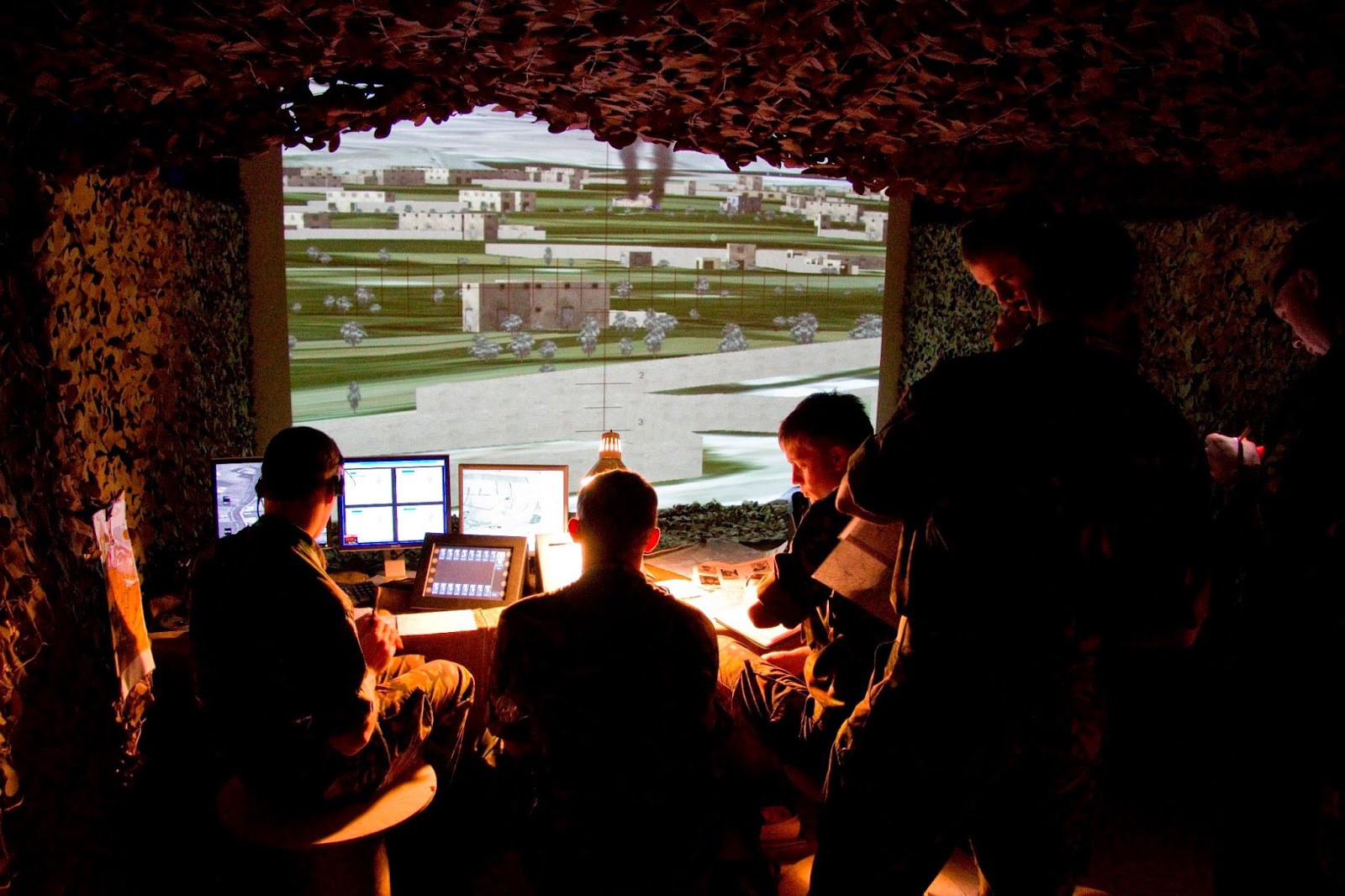Well – not exactly. DSALT is not an exhortation to improving one’s personal diet, but rather an acronym for Distributed Synthetic Air Land Training, a world class initiative in distributed training managed for the UK Ministry of Defence (MoD) by QinetiQ. The company is showcasing some of the technologies underlying DSALT 2 on booth 1238 at this week’s I/ITSEC 2014 conference and exhibition in Orlando, FL.
QinetiQ developed DSALT in close consultation with MoD over a five year period and was recently awarded a follow-on contract, valued at £33 million ($53 million) for a further five years. The company is supported in its endeavour by a consortium including Boeing and Plexsys, among others.
DSALT provides integrated, comprehensive and distributed training from the UK’s premier joint collective synthetic mission training centre - the Air Battlespace Training Centre at RAF Waddington in Lincolnshire. The facilities include a number of simulators, including domes and tents to accommodate a variety of military aircraft and teams. Generic virtual role-playing desktop simulators, computer generated forces workstations and a tactical unmanned aerial vehicle workstation are also located at the facility, supporting the staff instructors.
An example of training delivered at RAF Waddington is the Steel Dragon training exercise, which provides trainees with experience of a realistic, high threat environment, to which they must respond with appropriate operational tactics, techniques and procedures.
Russ Cole, Flight Simulation and Synthetic Trainers Team Leader at MoD's Defence Equipment and Support, said "Simulation and synthetic training is an extremely important part of training our modern Armed Forces and, although it will never fully replace live training, the ability to practice and train in highly realistic but safe environments is a vital, life-saving capability essential to effective mission preparation."
DSALT2 is capable of reconfiguration, and the training will evolve over the next five years to meet the future operational needs of the military. DSALT2 will continue to deliver immediate and detailed after action review of a training event, displaying the battle-space in 2D and 3D, ensuring key mission and training objectives, and any lessons learned, are seen and debriefed accordingly.
The QinetiQ team delivers networks, architectures and security technologies that enable mission training to take place at different locations across the country and the globe. The ability to link into live training exercises is also used to improve the training outcome by mixing in synthetic representations of unavailable assets.
Miles Adcock, Managing Director for QinetiQ Training, said, “We train the UK Armed Forces in the safe and effective employment of weapons systems available in an Air-Land battle, including artillery, mortars, attack helicopters, fixed wing and unmanned aircraft. Such realistic conditions are not usually available outside actual operations and our training provides vital preparation ahead of missions.”
| Image may be NSFW. Clik here to view.  |
| Qinetiq showcasing technologies underlying DSALT2. |
QinetiQ developed DSALT in close consultation with MoD over a five year period and was recently awarded a follow-on contract, valued at £33 million ($53 million) for a further five years. The company is supported in its endeavour by a consortium including Boeing and Plexsys, among others.
DSALT provides integrated, comprehensive and distributed training from the UK’s premier joint collective synthetic mission training centre - the Air Battlespace Training Centre at RAF Waddington in Lincolnshire. The facilities include a number of simulators, including domes and tents to accommodate a variety of military aircraft and teams. Generic virtual role-playing desktop simulators, computer generated forces workstations and a tactical unmanned aerial vehicle workstation are also located at the facility, supporting the staff instructors.
An example of training delivered at RAF Waddington is the Steel Dragon training exercise, which provides trainees with experience of a realistic, high threat environment, to which they must respond with appropriate operational tactics, techniques and procedures.
Russ Cole, Flight Simulation and Synthetic Trainers Team Leader at MoD's Defence Equipment and Support, said "Simulation and synthetic training is an extremely important part of training our modern Armed Forces and, although it will never fully replace live training, the ability to practice and train in highly realistic but safe environments is a vital, life-saving capability essential to effective mission preparation."
DSALT2 is capable of reconfiguration, and the training will evolve over the next five years to meet the future operational needs of the military. DSALT2 will continue to deliver immediate and detailed after action review of a training event, displaying the battle-space in 2D and 3D, ensuring key mission and training objectives, and any lessons learned, are seen and debriefed accordingly.
The QinetiQ team delivers networks, architectures and security technologies that enable mission training to take place at different locations across the country and the globe. The ability to link into live training exercises is also used to improve the training outcome by mixing in synthetic representations of unavailable assets.
Miles Adcock, Managing Director for QinetiQ Training, said, “We train the UK Armed Forces in the safe and effective employment of weapons systems available in an Air-Land battle, including artillery, mortars, attack helicopters, fixed wing and unmanned aircraft. Such realistic conditions are not usually available outside actual operations and our training provides vital preparation ahead of missions.”
Tim Mahon
